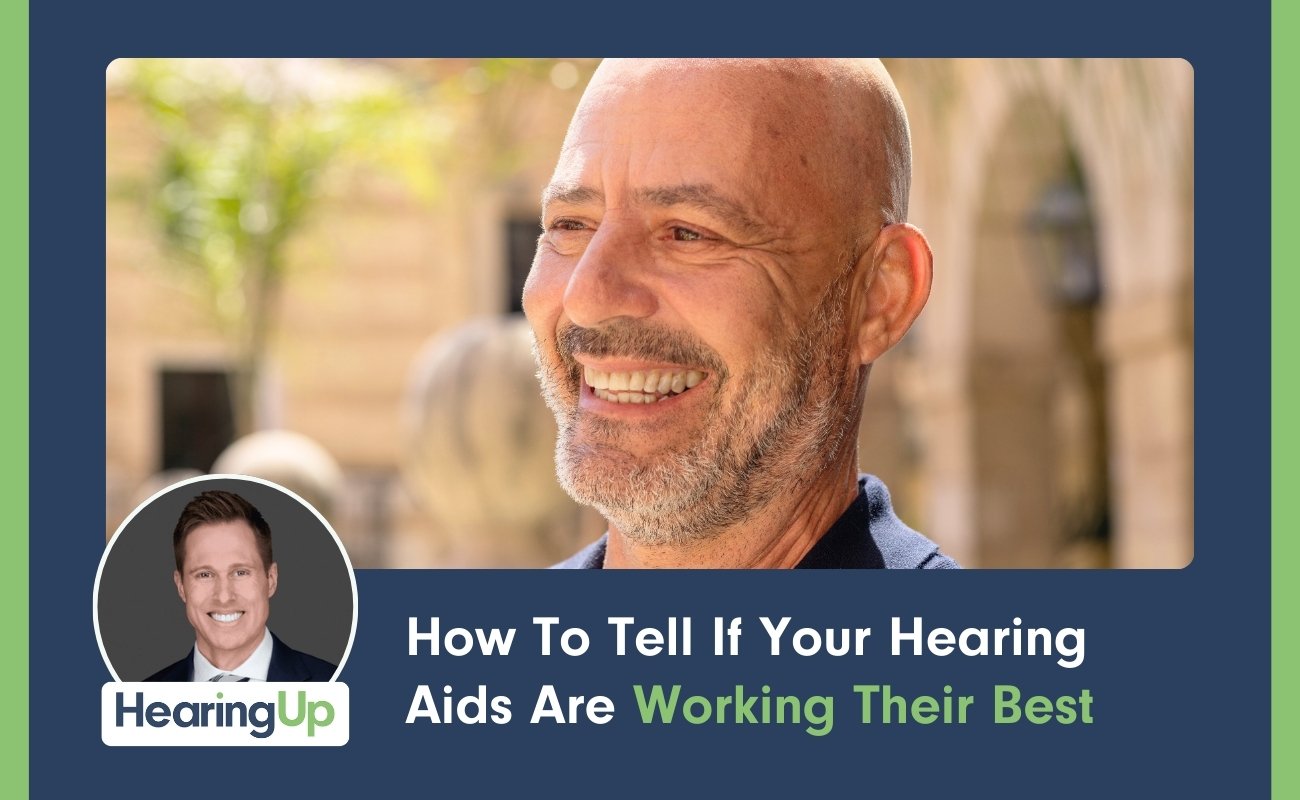Earwax, medically known as cerumen, is a natural secretion of the ear that protects it by trapping dust and small particles, preventing them from reaching the eardrum. However, excessive earwax buildup can lead to issues like itchiness, pain, and even hearing loss. Therefore, regular and safe removal of excess earwax is essential for maintaining ear health.
Options for At-Home Earwax Removal
How to Use an Irrigation Kit
Preventative Measures and Best Practices
The Final Word
Effective earwax removal at home is possible with the right tools and methods. Irrigation kits like the Wax Blaster MD offer a safe and effective solution. However, it’s crucial to be cautious and avoid methods that could harm your ears. Regular maintenance and understanding the right techniques are key to preventing earwax buildup and potential hearing issues.
Which one of these gizmos is best for at-home earwax removal? Let's find out. Excessive earwax buildup is a huge problem for a lot of people. While some earwax is actually a good thing, having too much earwax can lead to a lot of bad things, including itchy ears, pain, and even hearing loss. If you happen to be one of the unlucky people who happens to struggle with excessive earwax buildup, you have to be very proactive about getting that earwax removed. Now, I am a huge supporter of at-home earwax removal, as long as the method that you use is effective and more importantly, safe. When you look at some of the more common ways of performing earwax removal, you basically have three options. You can suck it out, you can pick it out, or you can flush it out. Let me go ahead and cover some of the pros and cons of each of these methods, but before I do, if you could do me a huge favor, click that like button.
It really helps out my channel and it gets these videos in front of a bigger audience, and while you're at it, if you have not yet, hit that subscribe button with notification bell, go ahead and do that as well, because that ensures that you never miss one of my newly released videos and I release multiple new videos every single week. That being said, it's greatly appreciated and huge shout out to Eosera for sponsoring today's video, but more in them and a little bit. As an audiologist who specializes in earwax removal, I love to use suction inside of my clinic. This method is perfect for earwax that is loose inside of the ear canal, but it is not a very good option. If you have earwax that is impacted and stuck to the ear canal walls. The professional suction tools can create a lot of suction with a flow rate of approximately 15 to 20 liters per minute and a vacuum level of approximately 500 to 600 millimeters of mercury in order to suction out earwax effectively.
But for at home use, you've probably seen consumer suction devices like these that you can purchase online. Unfortunately, I've tested virtually every single consumer suction device for earwax that you can possibly find online, and none of them create the amount of suction that would be required to successfully remove earwax. In fact, none of these were even capable of suctioning water out of an ear canal. Of course, professional grade suction equipment is expensive, but it's also dangerous if you do not know how to use it effectively. This is why you cannot purchase professional equipment online as a consumer. This leads us to our second method of earwax removal, which is picking out the earwax trained earwax. Removal specialists will typically use tools like metal spec to open the ear canal and use curettes to scrape the ear wax out. Sometimes we'll even use alligator forceps to pick the earwax out. If you're trying to pick out earwax at home, people typically will use something like a cotton swab or a bobby pin. Ever since their creation, cotton swabs have been used to remove earwax at home despite very specific warnings on the packaging not to do so. Why is it that all brands of cotton swabs warn you not to stick these inside of your ears? Well, it's simple. A lot of people will actually pack earwax further into their ear canal creating a bigger problem, or they'll actually push this through their eardrum. Creating
A medical emergency, not to mention it is extremely painful and it can give you a permanent hearing loss and don't even get me started with bobby pins. This is why every medical professional you ever meet will tell you never to stick anything smaller than your elbow inside of your ear canal. Fortunately, most of us have evolved away from these forums of blindly sticking things inside of your ear canals to remove earwax and have instead started using video endoscopes so at least we can see what we're doing. Video endoscopes allow us to see inside of our own ear canals, and some of them even have scoops on the end of them for you to pick out your own earwax, but you can actually see what you're doing while you're removing it. If you insist on picking out your own earwax, using a video endoscope with a scoop is probably the safest way to do it, but proceed at your own risk because I've seen some nasty cases of this going wrong.
At this point, you're probably thinking, that's great, cliff, but you're telling me that suction doesn't work and it's dangerous to try to pick the earwax out of my own ear canal, so what the heck else am I supposed to do? Well, this leads me to the third method of earwax removal, which is irrigation. Irrigation is one of the preferred methods of medical professionals for safely and effectively removing even the most stubborn cases of earwax buildup. Oftentimes prior to irrigation, ear wax softeners will be used to break up the ear wax so it can be irrigated out of your ears more easily. Once professional irrigation with warm water is complete, oftentimes your ear canals are left squeaky clean. However, unless you've got around four grand laying around for a professional ear irrigation device, you may need a more cost effective option like the Wax Blaster MD from Eosera.
Today's video sponsor, one of my favorite things about the wax blaster MD is the straight nozzle that it has, so it's very easy to use one hand to irrigate your ear out as opposed to a bottle like this. It has a flimsy end on it that requires the use of two hands, and the special green safety tip on the end of this bottle allows the flow of water when you're spraying it into your ear to easily come out of your ear canal and either into an ear basin or onto the floor of your shower without building up pressure inside of your ear canal. To use the Wax Blaster md, all you have to do is add warm water into the bottle and then either stand over your sink or hold the basin under your ear and then pump the water into your ear canal to flush out any earwax that you may have.
If you still feel like you have earwax inside of your ear canals after you're using the Wax Blaster MD, you can always use Earwax MD to soften the earwax even further, and then give it a second rinse. In my opinion, the best way to prevent ear wax from becoming a major problem is to consistently irrigate your ears to keep the earwax at bay. Not only is it the most effective way to prevent ear wax from becoming a problem, but it's also the safest way you can purchase the Wax Blaster MD at Eosera's Amazon store that I'll have linked in the description of this video or at your local pharmacy where you can find a variety of other Eosera earwax removal products as well. At the
End the day, you have numerous options when it comes to ear wax removal at home, but as you can see, some of them are downright ineffective and others are even dangerous. This is why I consistently recommend performing at home irrigation of your ear canals because as long as you do not have a perforation in your eardrum, otherwise known as a hole in your eardrum, it is a very effective way to remove your earwax because after all, if you don't have an earwax problem, you do not need to get your earwax professionally removed, which can save you a lot of money.
Which one of these gizmos is best for at-home earwax removal? Let's find out. Excessive earwax buildup is a huge problem for a lot of people. While some earwax is actually a good thing, having too much earwax can lead to a lot of bad things, including itchy ears, pain, and even hearing loss. If you happen to be one of the unlucky people who happens to struggle with excessive earwax buildup, you have to be very proactive about getting that earwax removed. Now, I am a huge supporter of at-home earwax removal, as long as the method that you use is effective and more importantly, safe. When you look at some of the more common ways of performing earwax removal, you basically have three options. You can suck it out, you can pick it out, or you can flush it out. Let me go ahead and cover some of the pros and cons of each of these methods, but before I do, if you could do me a huge favor, click that like button.
It really helps out my channel and it gets these videos in front of a bigger audience, and while you're at it, if you have not yet, hit that subscribe button with notification bell, go ahead and do that as well, because that ensures that you never miss one of my newly released videos and I release multiple new videos every single week. That being said, it's greatly appreciated and huge shout out to Eosera for sponsoring today's video, but more in them and a little bit. As an audiologist who specializes in earwax removal, I love to use suction inside of my clinic. This method is perfect for earwax that is loose inside of the ear canal, but it is not a very good option. If you have earwax that is impacted and stuck to the ear canal walls. The professional suction tools can create a lot of suction with a flow rate of approximately 15 to 20 liters per minute and a vacuum level of approximately 500 to 600 millimeters of mercury in order to suction out earwax effectively.
But for at home use, you've probably seen consumer suction devices like these that you can purchase online. Unfortunately, I've tested virtually every single consumer suction device for earwax that you can possibly find online, and none of them create the amount of suction that would be required to successfully remove earwax. In fact, none of these were even capable of suctioning water out of an ear canal. Of course, professional grade suction equipment is expensive, but it's also dangerous if you do not know how to use it effectively. This is why you cannot purchase professional equipment online as a consumer. This leads us to our second method of earwax removal, which is picking out the earwax trained earwax. Removal specialists will typically use tools like metal spec to open the ear canal and use curettes to scrape the ear wax out. Sometimes we'll even use alligator forceps to pick the earwax out. If you're trying to pick out earwax at home, people typically will use something like a cotton swab or a bobby pin. Ever since their creation, cotton swabs have been used to remove earwax at home despite very specific warnings on the packaging not to do so. Why is it that all brands of cotton swabs warn you not to stick these inside of your ears? Well, it's simple. A lot of people will actually pack earwax further into their ear canal creating a bigger problem, or they'll actually push this through their eardrum. Creating
A medical emergency, not to mention it is extremely painful and it can give you a permanent hearing loss and don't even get me started with bobby pins. This is why every medical professional you ever meet will tell you never to stick anything smaller than your elbow inside of your ear canal. Fortunately, most of us have evolved away from these forums of blindly sticking things inside of your ear canals to remove earwax and have instead started using video endoscopes so at least we can see what we're doing. Video endoscopes allow us to see inside of our own ear canals, and some of them even have scoops on the end of them for you to pick out your own earwax, but you can actually see what you're doing while you're removing it. If you insist on picking out your own earwax, using a video endoscope with a scoop is probably the safest way to do it, but proceed at your own risk because I've seen some nasty cases of this going wrong.
At this point, you're probably thinking, that's great, cliff, but you're telling me that suction doesn't work and it's dangerous to try to pick the earwax out of my own ear canal, so what the heck else am I supposed to do? Well, this leads me to the third method of earwax removal, which is irrigation. Irrigation is one of the preferred methods of medical professionals for safely and effectively removing even the most stubborn cases of earwax buildup. Oftentimes prior to irrigation, ear wax softeners will be used to break up the ear wax so it can be irrigated out of your ears more easily. Once professional irrigation with warm water is complete, oftentimes your ear canals are left squeaky clean. However, unless you've got around four grand laying around for a professional ear irrigation device, you may need a more cost effective option like the Wax Blaster MD from Eosera.
Today's video sponsor, one of my favorite things about the wax blaster MD is the straight nozzle that it has, so it's very easy to use one hand to irrigate your ear out as opposed to a bottle like this. It has a flimsy end on it that requires the use of two hands, and the special green safety tip on the end of this bottle allows the flow of water when you're spraying it into your ear to easily come out of your ear canal and either into an ear basin or onto the floor of your shower without building up pressure inside of your ear canal. To use the Wax Blaster md, all you have to do is add warm water into the bottle and then either stand over your sink or hold the basin under your ear and then pump the water into your ear canal to flush out any earwax that you may have.
If you still feel like you have earwax inside of your ear canals after you're using the Wax Blaster MD, you can always use Earwax MD to soften the earwax even further, and then give it a second rinse. In my opinion, the best way to prevent ear wax from becoming a major problem is to consistently irrigate your ears to keep the earwax at bay. Not only is it the most effective way to prevent ear wax from becoming a problem, but it's also the safest way you can purchase the Wax Blaster MD at Eosera's Amazon store that I'll have linked in the description of this video or at your local pharmacy where you can find a variety of other Eosera earwax removal products as well. At the
End the day, you have numerous options when it comes to ear wax removal at home, but as you can see, some of them are downright ineffective and others are even dangerous. This is why I consistently recommend performing at home irrigation of your ear canals because as long as you do not have a perforation in your eardrum, otherwise known as a hole in your eardrum, it is a very effective way to remove your earwax because after all, if you don't have an earwax problem, you do not need to get your earwax professionally removed, which can save you a lot of money.

HRV objectively measures stress affecting tinnitus by tracking autonomic balance, enabling data-driven treatment adjustments via Modern Tinnitus Basecamp.
Read More
Three methods confirm hearing aid performance: test box for specs, Real Ear Measurement for accuracy, and outcome assessments for effectiveness.
Read More.jpg)
Daily shower water flushing helps prevent earwax buildup more effectively and affordably than products, though impacted wax needs professional removal.
Read More
Hearing aid costs cover technology, expert services like Real Ear Measurement and fitting, ongoing support, and admin fees—justifying the investment.
Read More
Four evidence-based tinnitus treatments help patients achieve habituation through different neurological and psychological approaches.
Read More
Tinnitus amplifies stress through control loss, uncertainty, focus problems, communication challenges, and sleep disruption.
Read More